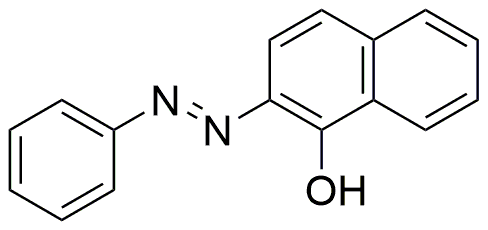Sudan I is widely utilized in research focused on:
- Dye Industry: Commonly used as a dye in textiles, Sudan I provides vibrant colors and is valued for its strong tinting properties, making it popular in fabric and leather coloring.
- Food Industry: Although banned in many countries due to safety concerns, it has been historically used as a colorant in food products. Understanding its applications helps researchers develop safer alternatives.
- Analytical Chemistry: Employed in various analytical techniques, Sudan I serves as a reference standard in the detection and quantification of azo dyes in environmental samples.
- Biological Research: Used in studies examining the carcinogenic properties of azo dyes, it helps researchers understand the mechanisms of dye metabolism and its effects on human health.
- Material Science: Sudan I is explored in the development of polymeric materials, where its properties can enhance color stability and performance in various applications.
General Information
Properties
Safety and Regulations
Applications
Sudan I is widely utilized in research focused on:
- Dye Industry: Commonly used as a dye in textiles, Sudan I provides vibrant colors and is valued for its strong tinting properties, making it popular in fabric and leather coloring.
- Food Industry: Although banned in many countries due to safety concerns, it has been historically used as a colorant in food products. Understanding its applications helps researchers develop safer alternatives.
- Analytical Chemistry: Employed in various analytical techniques, Sudan I serves as a reference standard in the detection and quantification of azo dyes in environmental samples.
- Biological Research: Used in studies examining the carcinogenic properties of azo dyes, it helps researchers understand the mechanisms of dye metabolism and its effects on human health.
- Material Science: Sudan I is explored in the development of polymeric materials, where its properties can enhance color stability and performance in various applications.
Documents
Safety Data Sheets (SDS)
The SDS provides comprehensive safety information on handling, storage, and disposal of the product.
Product Specification (PS)
The PS provides a comprehensive breakdown of the product’s properties, including chemical composition, physical state, purity, and storage requirements. It also details acceptable quality ranges and the product's intended applications.
Certificates of Analysis (COA)
Search for Certificates of Analysis (COA) by entering the products Lot Number. Lot and Batch Numbers can be found on a product’s label following the words ‘Lot’ or ‘Batch’.
*Catalog Number
*Lot Number
Certificates Of Origin (COO)
This COO confirms the country where the product was manufactured, and also details the materials and components used in it and whether it is derived from natural, synthetic, or other specific sources. This certificate may be required for customs, trade, and regulatory compliance.
*Catalog Number
*Lot Number
Safety Data Sheets (SDS)
The SDS provides comprehensive safety information on handling, storage, and disposal of the product.
DownloadProduct Specification (PS)
The PS provides a comprehensive breakdown of the product’s properties, including chemical composition, physical state, purity, and storage requirements. It also details acceptable quality ranges and the product's intended applications.
DownloadCertificates of Analysis (COA)
Search for Certificates of Analysis (COA) by entering the products Lot Number. Lot and Batch Numbers can be found on a product’s label following the words ‘Lot’ or ‘Batch’.
*Catalog Number
*Lot Number
Certificates Of Origin (COO)
This COO confirms the country where the product was manufactured, and also details the materials and components used in it and whether it is derived from natural, synthetic, or other specific sources. This certificate may be required for customs, trade, and regulatory compliance.


